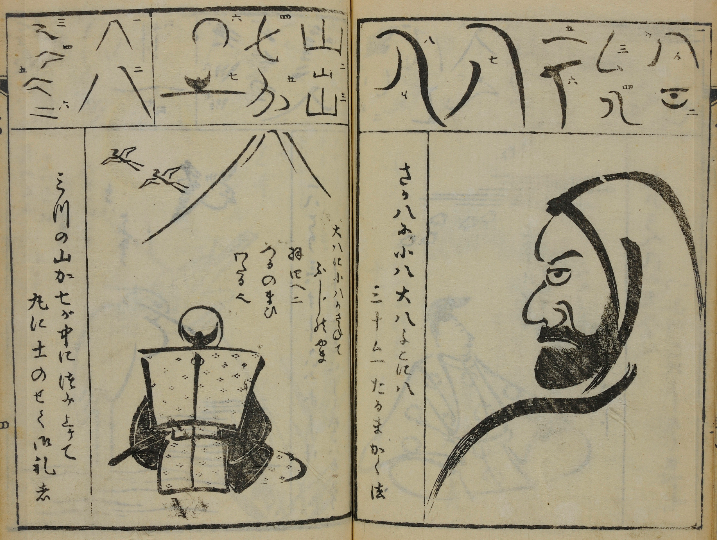It is difficult to have discussions in our current public square without becoming forced into false choices. Following Marshall McLuhan, we might think that the nature of the digital medium makes this happen, as much as the content of the messages. But some messages are more polarizing than others—with arguments over religion seemingly primed for binary oppositions.
That many nuanced positions exist between denying the validity of every religion and proclaiming a specific version as the only one true path shows how durable and flexible religious thought can be. The widespread diversity among religions cannot mask the significant degree of commonality between them, in all human societies, leading scholars like anthropologist Pascal Boyer to conclude, as he writes in Religion Explained, that “the explanation for religious beliefs and behaviors is to be found in the way all human minds work….”
I really mean all human minds not the just the minds of religious people or some of them. I am talking about human minds, because what matters here are properties of minds that are found in all members of our species with normal brains.
Famed Stanford biologist Robert Sapolsky, who happens to be an atheist, claims that somewhere around 95% of the human population believes in some sort of supernatural agency or religious set of explanations, and that such faith has “undeniable health benefits,” and is thus biologically motivated.
The real question, he reluctantly admits, is not why so many people believe, but “what’s up with the 5% of atheists who don’t do that?” The question needn’t imply there’s anything abnormal, inferior, or superior, about atheists. Variations don’t come with inherent values, though they may eventually become the norm.
But if we accept the well-supported thesis that religion is a phenomenon rooted in and naturally expressed by the human mind, like art, language, and literature, we would be negligent in remaining willfully ignorant of its expressions. And yet, Diane Moore, director of Harvard Divinity School’s Religious Literacy Project, tells the Huffington Post, “widespread illiteracy about religion… spans the globe” and “fuels bigotry and prejudice and hinders capacities for cooperative endeavors in local, national, and global arenas.”
Harvard aims to help change attitudes with their Religious Literacy Project, which offers free online courses on the world’s five major religions—Christianity, Islam, Judaism, Buddhism, and Hinduism—through their edX platform. The first course of the series, taught by Moore, is self paced. “Religious Literacy: Traditions and Scriptures” surveys the methodology of the project as a whole, exploring “case studies about how religions are internally diverse, how they evolve and change through time, and how religions are embedded in all dimensions of human experience.” (See a promo video at the top and a teaser for the project as a whole above.)
Understanding religion as both a universal phenomenon and a set of culturally and historically specific events resolves misunderstandings that result from oversimplified, static stereotypes. Studying the historical, theological, and geographical varieties of Islam, for example, makes it impossible to say anything definitive about one singular, monolithic “Islam,” and therefore about Muslims in general. The same goes for Christians, Hindus, Jews, Buddhists, etc. The fact that religion is embedded in nearly every facet of human experience, writes Moore in an introductory essay for the project, means that we can credit it with the “full range of agency from the heinous to the heroic,” rather than flipping between these extremes to score chauvinist points or invalidate entire realms of social life.
We’ve previously featured one of the courses from the big five series of classes, “Buddhism through its Scriptures.” The method there applies to each course, which all engage rigorously with primary sources and scholarly commentary to get students as close as possible to understanding religious practice from both the inside and the outside. Granted this canonical approach ignores the practices of millions of people outside the big five categories, but one could ostensibly apply a similar academic rubric to the study of syncretisms and indigenous religions all over the world.
Professor Moore’s “Religious Literacy” class—which you can audit free of charge or take for a certificate for $50—promises to give students the tools they need to understand how to survey religions critically, yet sympathetically, and to “interpret the roles religions play in contemporary and historic contexts.” Like it or not, religions of every kind remain pervasive and seemingly intractable. Rather than fighting over this fact of life, we would all do better to try and understand it. Begin to enlarge your own understanding by signing up for “Religious Literacy: Traditions and Scriptures” for free.
Related Content:
Take Harvard’s Introductory Course on Buddhism, One of Five World Religions Classes Offered Free Online
Atheist Stanford Biologist Robert Sapolsky Explains How Religious Beliefs Reduce Stress
Free Online Religion Courses
Josh Jones is a writer and musician based in Durham, NC. Follow him at @jdmagness







